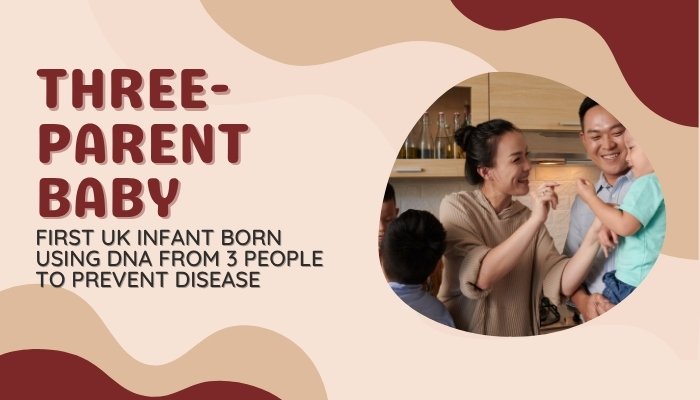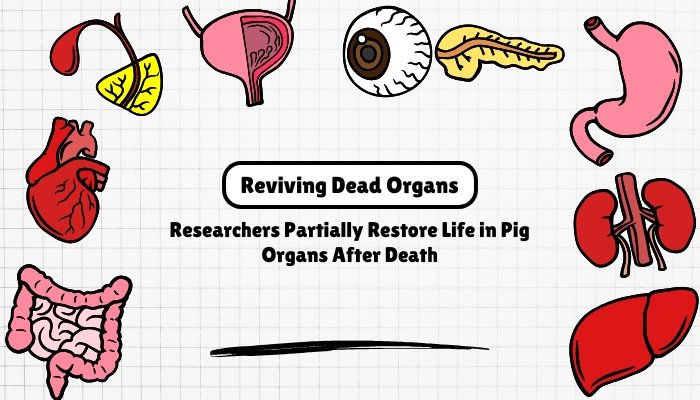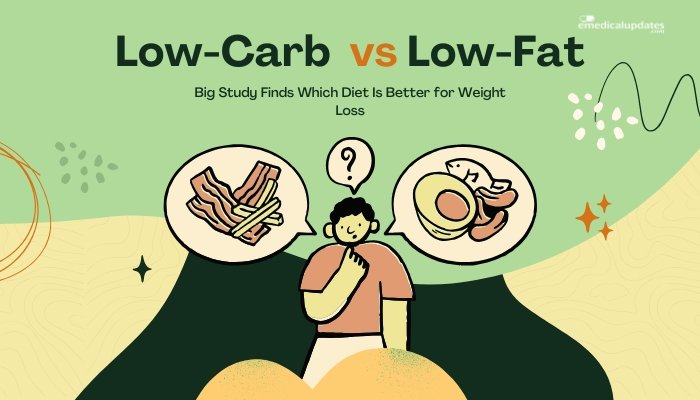Introduction
In a groundbreaking moment for reproductive medicine, the United Kingdom has witnessed the birth of its first baby conceived with DNA from three different people. This technique, commonly referred to as the “three-parent baby” method, represents a revolutionary approach aimed at preventing the transmission of devastating genetic diseases. While it raises complex ethical, social, and scientific debates, the achievement highlights how far medical science has progressed in safeguarding future generations.
This development is particularly significant for families with a history of mitochondrial disorders, which often lead to severe and life-limiting conditions. By combining genetic material from two parents with a small portion of mitochondrial DNA from a donor, scientists and doctors can provide these families with renewed hope for a healthier child.
What Is a Three-Parent Baby?
The term “three-parent baby” is slightly misleading but helps convey the idea. In reality, the child still inherits almost all of their DNA (more than 99.8%) from the biological mother and father. A very small fraction—mitochondrial DNA (mtDNA)—comes from a donor. This small change can make a big difference in health.
- Nuclear DNA (from mother and father): Contains most genetic material (about 20,000 genes). This defines physical traits like height, eye color, and intelligence.
- Mitochondrial DNA (from donor): Contains just 37 genes, all responsible for energy production in cells.
By replacing faulty mitochondria from the mother’s egg with healthy ones from a donor, doctors prevent the transmission of mitochondrial diseases while preserving the child’s family identity.
Why Is This Important?
Mitochondria are the “powerhouses” of the cell. When they malfunction due to inherited mutations, the consequences can be severe. Diseases caused by mitochondrial dysfunction include:
- Muscle weakness and neurological disorders
- Organ failure (liver, heart, kidneys, brain)
- Seizures, stroke-like episodes, and developmental delays
- Premature death in severe cases
Mitochondrial diseases affect approximately 1 in 4,000 people globally. There is currently no cure, and treatment is largely supportive. For families carrying high-risk mutations, every pregnancy carries uncertainty and fear. This new technique offers the possibility of having healthy children free of these conditions.
The Technique: Mitochondrial Donation Therapy (MDT)
The method used in the UK is called Mitochondrial Donation Therapy (MDT). There are two main approaches:
- Maternal Spindle Transfer (MST):
- The mother’s nuclear DNA is removed from her egg.
- This DNA is placed into a donor egg that has had its own nuclear DNA removed but retains healthy mitochondria.
- The reconstructed egg is fertilized with the father’s sperm.
- Pronuclear Transfer (PNT):
- Both the mother’s egg and donor’s egg are fertilized with sperm.
- The pronuclei (containing nuclear DNA from parents) are removed from both.
- The parents’ pronuclei are inserted into the donor’s fertilized egg containing healthy mitochondria.
Both approaches ensure that the baby carries nuclear DNA from the biological parents and mitochondrial DNA from the donor.
The UK’s Role in the Breakthrough
The UK is the first country in the world to formally legalize and regulate mitochondrial donation therapy. In 2015, after years of debate, Parliament approved the use of MDT under strict conditions. The Human Fertilisation and Embryology Authority (HFEA) was tasked with reviewing applications and ensuring that the technology was used only in high-risk cases.
The first UK baby born using MDT represents the culmination of decades of research and careful oversight. Newcastle Fertility Centre, a pioneer in this field, played a central role in the procedure.
Ethical and Social Considerations
While the science is exciting, it has stirred intense debate:
- Ethical Concerns: Critics argue that altering germline DNA (inheritable changes passed to future generations) could set a precedent for “designer babies.” Although MDT is aimed only at disease prevention, it raises broader questions about how far genetic intervention should go.
- Religious Perspectives: Some faith-based groups oppose the technology, viewing it as interference with natural creation or raising concerns about embryo destruction during the process.
- Identity and Parenthood: Does the donor count as a third parent? Legally and socially, the answer is no. The donor contributes just a fraction of DNA, with no parental rights or obligations. Still, some worry about how children born from this technique may view their identity.
- Safety: Although considered safe, MDT is still relatively new. Long-term follow-up studies are needed to confirm that the children remain healthy throughout life.
Global Developments
While the UK has been the first to legalize MDT, other countries have taken different approaches:
- United States: The procedure is not approved, though some clinics abroad have offered it to American couples.
- Mexico: In 2016, the world’s first child conceived through MDT was born in Mexico, performed by a US team because of regulatory restrictions in the US.
- Australia and Greece: Both countries have shown interest, with research trials and discussions underway.
The UK’s experience may serve as a model for other nations considering whether to adopt or regulate the procedure.
Benefits of the Technique
The primary benefit is disease prevention. For couples with a high risk of transmitting mitochondrial disease, MDT may be their only option to have genetically related children without the burden of illness.
Other benefits include:
- Hope for families who previously faced infertility or repeated pregnancy loss due to mitochondrial disease.
- Reduced healthcare burden by preventing lifelong, expensive medical care for affected children.
- Scientific progress that could pave the way for other therapeutic applications.
Risks and Challenges
Despite its promise, MDT is not without challenges:
- Technical complexity: The procedure requires highly skilled teams and specialized facilities.
- Cost: It is expensive, limiting accessibility.
- Unknowns: The long-term health effects for children born via MDT remain under study.
- Potential misuse: Concerns about future applications extending beyond disease prevention.
Public Perception and Future Directions
Public opinion has been cautiously supportive in the UK, especially among families directly affected by mitochondrial disease. Education and transparency are critical to maintaining trust. The birth of the first UK three-parent baby is likely to spark renewed global debate about where to draw the line in genetic medicine.
Looking forward:
- Long-term monitoring of MDT children will provide vital safety data.
- Expansion of access to more families could occur if results remain positive.
- Ongoing dialogue about ethical limits will be essential to balance innovation with responsibility.
Conclusion
The birth of the first UK infant conceived using DNA from three people is a historic milestone in reproductive medicine. It demonstrates the power of science to prevent devastating diseases and give families the chance to raise healthy children. By replacing faulty mitochondria with healthy donor DNA, doctors can halt the transmission of conditions that have plagued families for generations.
However, with progress comes responsibility. The technique raises profound ethical, social, and scientific questions that cannot be ignored. The UK’s careful regulatory framework shows that it is possible to balance innovation with oversight, ensuring that such breakthroughs are used only where truly necessary.
In the coming years, the lives of children born through mitochondrial donation will offer the clearest answers. If they thrive, this technology could become a cornerstone of reproductive medicine worldwide. For now, the “three-parent baby” is more than a medical marvel—it is a symbol of hope, science, and the ongoing struggle to outsmart disease while preserving our shared humanity.



